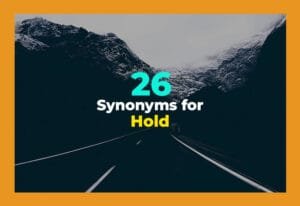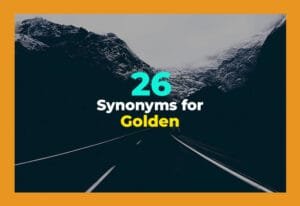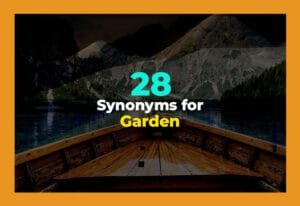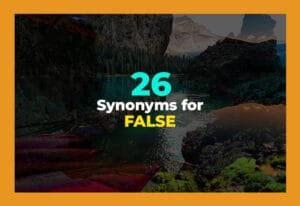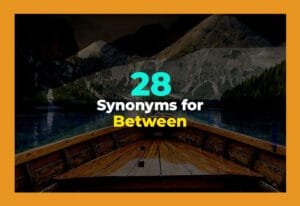When writing emails or letters, the way you close your message can leave a lasting impression. Instead of always using “Best Regards,” there are many alternative phrases like “Kind Regards,” “Warm Regards,” or “Sincerely.” Choosing the right closing can make your message feel more personal, professional, or friendly depending on the context. In this article, we'll explore 18 different ways to say Best Regards and provide practical examples for each.
18 Different Ways to Say BEST REGARDS: Another Word for Best Regards
Kind Regards
“Kind Regards” is a widely accepted and polite way to close a message. It's slightly warmer than “Best Regards,” making it perfect for professional communication where you want to show friendliness without being overly casual. It works well in both email and letter formats and is often used when addressing colleagues, clients, or new acquaintances. Using “Kind Regards” conveys respect and professionalism while keeping the tone approachable.
- I look forward to your response. Kind Regards,
- Thank you for your help with this project. Kind Regards,
- Please let me know if you have any questions. Kind Regards,
Warm Regards
“Warm Regards” adds a touch of personal warmth while still maintaining professionalism. It works especially well when communicating with someone you know well or want to build rapport with. This phrase signals that you are friendly and approachable, making it suitable for colleagues, clients, or acquaintances with whom you have a positive relationship. It strikes a balance between formal and casual communication.
- I enjoyed our meeting today. Warm Regards,
- Thank you for your time and consideration. Warm Regards,
- Looking forward to working with you again. Warm Regards,
Sincerely
“Sincerely” is a classic and formal closing that conveys honesty and professionalism. It's appropriate in almost any professional or formal context, such as cover letters, official correspondence, or formal requests. Using “Sincerely” signals that your message is genuine and respectful. It works well when you want to leave a strong, professional impression.
- I appreciate your feedback on this matter. Sincerely,
- Please find the attached documents for your review. Sincerely,
- Thank you for considering my application. Sincerely,
Regards
“Regards” is a straightforward, versatile closing that fits both professional and casual emails. It's less formal than “Sincerely” but still polite, making it ideal for everyday business communication. You can use it when you want to remain professional without sounding overly stiff. It works in emails to colleagues, clients, or people you have ongoing correspondence with.
- I'll follow up with the report tomorrow. Regards,
- Thanks for your prompt reply. Regards,
- Please let me know your availability. Regards,
Best
“Best” is an abbreviated version of “Best Regards,” which has become common in modern email communication. It's casual yet professional enough for workplace messages, offering a friendly closing without being overly formal. Use “Best” when sending quick emails or when you have a friendly rapport with the recipient. It's simple, clear, and widely accepted.
- I'll get back to you shortly. Best,
- Thanks for your assistance with this. Best,
- Looking forward to your reply. Best,
Yours Truly
“Yours Truly” is a more formal and traditional closing that expresses sincerity and respect. It's suitable for professional correspondence, formal letters, and situations where you want to convey a respectful tone. This phrase is slightly old-fashioned but still effective, especially in legal, official, or formal contexts. It emphasizes trust and integrity in your communication.
- I hope this information meets your needs. Yours Truly,
- Thank you for your attention to this matter. Yours Truly,
- Please accept my appreciation for your help. Yours Truly,
With Appreciation
“With Appreciation” is a warm and thoughtful closing that emphasizes gratitude. It works particularly well when you want to thank someone or acknowledge their effort. This phrase conveys genuine acknowledgment and can make your message feel more personal while remaining professional. It's ideal for colleagues, mentors, or clients who have provided support.
- Thank you for your guidance on this project. With Appreciation,
- I truly value your input and time. With Appreciation,
- Your help has been incredibly valuable. With Appreciation,
Yours Faithfully
“Yours Faithfully” is a traditional formal closing, often used in British English when you start a letter with “Dear Sir/Madam.” It conveys respect and adherence to formalities, making it suitable for official correspondence. This phrase ensures that your tone remains professional and serious, particularly in legal or business letters.
- I look forward to your reply. Yours Faithfully,
- Please accept this formal request for information. Yours Faithfully,
- I appreciate your consideration of my application. Yours Faithfully,
Respectfully
“Respectfully” signals deference and courtesy, making it ideal for formal situations or correspondence with authority figures. It communicates professionalism and humility, often used in business, government, or academic contexts. This closing ensures that your tone remains respectful and thoughtful without being overly casual.
- I submit this report for your review. Respectfully,
- Thank you for your guidance on this issue. Respectfully,
- I appreciate your time and consideration. Respectfully,
All the Best
“All the Best” is friendly and approachable while still professional enough for work emails. It conveys positive wishes and a supportive tone, making it perfect for colleagues, clients, or acquaintances. This phrase works well when you want to maintain professionalism without sounding too formal or distant.
- Wishing you a successful week ahead. All the Best,
- Thank you for your collaboration on this project. All the Best,
- I hope everything goes smoothly with your presentation. All the Best,
Many Thanks
“Many Thanks” emphasizes gratitude while remaining informal yet professional. It's ideal for acknowledging help, responses, or support from colleagues, clients, or contacts. This phrase conveys appreciation clearly and can make your message feel more personable while maintaining a polite tone.
- Many Thanks for your prompt response,
- Many Thanks for reviewing the documents,
- Many Thanks for your assistance today,
Take Care
“Take Care” is warm and casual, best used in less formal contexts or when you have a friendly relationship with the recipient. It conveys genuine concern and friendliness, making it perfect for colleagues, acquaintances, or clients you know well. It creates a relaxed, personable tone.
- Take Care and enjoy your weekend,
- Take Care and let me know if you need anything,
- Take Care and stay safe,
Cordially
“Cordially” is a polite and professional closing that conveys friendliness without being overly casual. It works well in business and formal correspondence, showing that you are approachable while maintaining decorum. This phrase is suitable when addressing clients, colleagues, or professional contacts.
- I look forward to your feedback. Cordially,
- Thank you for your time and attention. Cordially,
- Please feel free to contact me with questions. Cordially,
With Kindness
“With Kindness” conveys warmth and thoughtfulness while remaining professional. It is appropriate when you want to add a personal touch to professional or semi-formal correspondence. This closing reflects a gentle, caring tone and can strengthen your relationship with the recipient.
- I appreciate your help with this matter. With Kindness,
- Wishing you all the best in your endeavors. With Kindness,
- Thank you for your continued support. With Kindness,
Yours Sincerely
“Yours Sincerely” is a formal and classic closing used in letters and emails, especially in professional contexts. It is suitable for business communication where you want to maintain a respectful and polished tone. This phrase ensures your message comes across as courteous and trustworthy.
- I appreciate your prompt attention to this matter. Yours Sincerely,
- Thank you for your consideration and time. Yours Sincerely,
- Please let me know if further information is needed. Yours Sincerely,
Cheers
“Cheers” is casual and friendly, perfect for informal communication with colleagues, friends, or contacts you know well. It adds a lighthearted tone to your message while maintaining professionalism in semi-casual contexts. It's often used in modern emails and messages where a relaxed, approachable vibe is desired.
- Cheers, and thanks for your help,
- Cheers, looking forward to catching up soon,
- Cheers, hope the project goes well,
Peace
“Peace” is an unconventional but warm closing that conveys goodwill and positivity. It works best in casual or personal professional communications where a friendly, approachable tone is appropriate. This phrase can help make your email feel personal and genuine.
- Peace, and have a great day,
- Peace, thank you for your input,
- Peace, looking forward to connecting soon,
Take It Easy
“Take It Easy” is casual and friendly, ideal for emails to colleagues, friends, or clients with whom you have a relaxed rapport. It communicates a sense of care and approachability, making your message feel personable while still being polite.
- Take It Easy, and enjoy your weekend,
- Take It Easy, thanks for your support,
- Take It Easy, see you at the meeting,
| Synonym | Example |
|---|---|
| Kind Regards | I look forward to your response. Kind Regards, |
| Warm Regards | I enjoyed our meeting today. Warm Regards, |
| Sincerely | I appreciate your feedback on this matter. Sincerely, |
| Regards | I'll follow up with the report tomorrow. Regards, |
| Best | I'll get back to you shortly. Best, |
| Yours Truly | I hope this information meets your needs. Yours Truly, |
| With Appreciation | Thank you for your guidance on this project. With Appreciation, |
| Yours Faithfully | I look forward to your reply. Yours Faithfully, |
| Respectfully | I submit this report for your review. Respectfully, |
| All the Best | Wishing you a successful week ahead. All the Best, |
| Many Thanks | Many Thanks for your prompt response, |
| Take Care | Take Care and enjoy your weekend, |
| Cordially | I look forward to your feedback. Cordially, |
| With Kindness | I appreciate your help with this matter. With Kindness, |
| Yours Sincerely | I appreciate your prompt attention to this matter. Yours Sincerely, |
| Cheers | Cheers, and thanks for your help, |
| Peace | Peace, and have a great day, |
| Take It Easy | Take It Easy, and enjoy your weekend, |
Final Thoughts
I hope this list of alternative closings gives you more confidence in your email and letter writing. Choosing the right phrase can make your message feel professional, friendly, or personal depending on the situation. By using these 18 alternatives, you can tailor your tone to suit the recipient and context perfectly, leaving a lasting positive impression with every correspondence.


